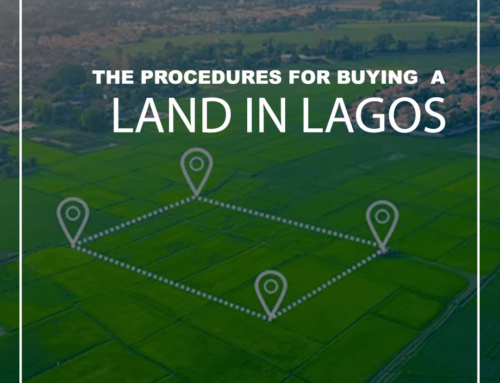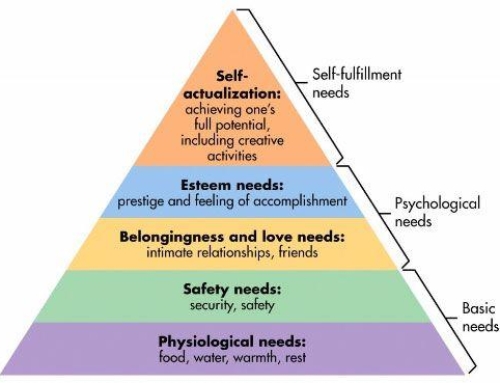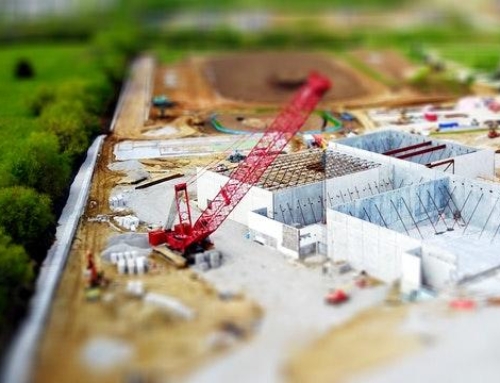What Is Bitcoin Mining?
Chances are you hear the phrase “bitcoin mining” and your mind begins to wander to the Western fantasy of pickaxes, dirt and striking it rich. As it turns out, that analogy isn’t too far off.
Bitcoin mining is performed by high-powered computers that solve complex computational math problems; these problems are so complex that they cannot be solved by hand and are complicated enough to tax even incredibly powerful computers.
KEY TAKEAWAYS
- Bitcoin mining is the process of creating new bitcoin by solving a computational puzzle.
- Bitcoin mining is necessary to maintain the ledger of transactions upon which bitcoin is based.
- Miners have become very sophisticated over the last several years using complex machinery to speed up mining operations.
The result of bitcoin mining is twofold. First, when computers solve these complex math problems on the bitcoin network, they produce new bitcoin (not unlike when a mining operation extracts gold from the ground). And second, by solving computational math problems, bitcoin miners make the bitcoin payment network trustworthy and secure by verifying its transaction information.
When someone sends bitcoin anywhere, it’s called a transaction. Transactions made in-store or online are documented by banks, point-of-sale systems, and physical receipts. Bitcoin miners achieve the same thing by clumping transactions together in “blocks” and adding them to a public record called the “blockchain.” Nodes then maintain records of those blocks so that they can be verified into the future.
When bitcoin miners add a new block of transactions to the blockchain, part of their job is to make sure that those transactions are accurate. In particular, bitcoin miners make sure that bitcoin is not being duplicated, a unique quirk of digital currencies called “double-spending.” With printed currencies, counterfeiting is always an issue. But generally, once you spend $20 at the store, that bill is in the clerk’s hands. With digital currency, however, it’s a different story.
Digital information can be reproduced relatively easily, so with Bitcoin and other digital currencies, there is a risk that a spender can make a copy of their bitcoin and send it to another party while still holding onto the original.1
Special Considerations
Rewarding Bitcoin Miners
With as many as 300,000 purchases and sales occurring in a single day, verifying each of those transactions can be a lot of work for miners.2 As compensation for their efforts, miners are awarded bitcoin whenever they add a new block of transactions to the blockchain.
The amount of new bitcoin released with each mined block is called the “block reward.” The block reward is halved every 210,000 blocks (or roughly every 4 years). In 2009, it was 50. In 2013, it was 25, in 2018 it was 12.5, and in May of 2020, it was halved to 6.25.
Bitcoin successfully halved its mining reward—from 12.5 to 6.25—for the third time on May 11th, 2020.
This system will continue until around 2140.3 At that point, miners will be rewarded with fees for processing transactions that network users will pay. These fees ensure that miners still have the incentive to mine and keep the network going. The idea is that competition for these fees will cause them to remain low after halvings are finished.
:max_bytes(150000):strip_icc()/BlockReward-5c0ad88946e0fb0001af7198.png)
These halvings reduce the rate at which new coins are created and, thus, lower the available supply. This can cause some implications for investors, as other assets with low supply—like gold—can have high demand and push prices higher. At this rate of halving, the total number of bitcoin in circulation will reach a limit of 21 million, making the currency entirely finite and potentially more valuable over time.3
El Salvador made Bitcoin legal tender on June 9, 2021.4 It is the first country to do so. The cryptocurrency can be used for any transaction where the business can accept it. The U.S. dollar continues to be El Salvador’s primary currency.
Verifying Bitcoin Transactions
In order for bitcoin miners to actually earn bitcoin from verifying transactions, two things have to occur. First, they must verify one megabyte (MB) worth of transactions, which can theoretically be as small as one transaction but are more often several thousand, depending on how much data each transaction stores.
Second, in order to add a block of transactions to the blockchain, miners must solve a complex computational math problem, also called a “proof of work.” What they’re actually doing is trying to come up with a 64-digit hexadecimal number, called a “hash,” that is less than or equal to the target hash. Basically, a miner’s computer spits out hashes at different rates—megahashes per second (MH/s), gigahashes per second (GH/s), or terahashes per second (TH/s)—depending on the unit, guessing all possible 64-digit numbers until they arrive at a solution. In other words, it’s a gamble.
The difficulty level of the most recent block as of August 2020 is more than 16 trillion. That is, the chance of a computer producing a hash below the target is 1 in 16 trillion. To put that in perspective, you are about 44,500 times more likely to win the Powerball jackpot with a single lottery ticket than you are to pick the correct hash on a single try. Fortunately, mining computer systems spit out many hash possibilities. Nonetheless, mining for bitcoin requires massive amounts of energy and sophisticated computing operations.
The difficulty level is adjusted every 2016 blocks, or roughly every 2 weeks, with the goal of keeping rates of mining constant.5 That is, the more miners there are competing for a solution, the more difficult the problem will become. The opposite is also true. If computational power is taken off of the network, the difficulty adjusts downward to make mining easier.
Bitcoin Mining Analogy
Say I tell three friends that I’m thinking of a number between 1 and 100, and I write that number on a piece of paper and seal it in an envelope. My friends don’t have to guess the exact number, they just have to be the first person to guess any number that is less than or equal to the number I am thinking of. And there is no limit to how many guesses they get.
Let’s say I’m thinking of the number 19. If Friend A guesses 21, they lose because 21>19. If Friend B guesses 16 and Friend C guesses 12, then they’ve both theoretically arrived at viable answers, because 16<19 and 12<19. There is no ‘extra credit’ for Friend B, even though B’s answer was closer to the target answer of 19.
Now imagine that I pose the ‘guess what number I’m thinking of’ question, but I’m not asking just three friends, and I’m not thinking of a number between 1 and 100. Rather, I’m asking millions of would-be miners and I’m thinking of a 64-digit hexadecimal number. Now you see that it’s going to be extremely hard to guess the right answer.
Not only do bitcoin miners have to come up with the right hash, but they also have to be the first to do it.
Because bitcoin mining is essentially guesswork, arriving at the right answer before another miner has almost everything to do with how fast your computer can produce hashes. Just a decade ago, bitcoin mining could be performed competitively on normal desktop computers. Over time, however, miners realized that graphics cards commonly used for video games were more effective and they began to dominate the game. In 2013, bitcoin miners started to use computers designed specifically for mining cryptocurrency as efficiently as possible, called Application-Specific Integrated Circuits (ASIC). These can run from several hundred dollars to tens of thousands but their efficiency in mining Bitcoin is superior.
Today, bitcoin mining is so competitive that it can only be done profitably with the most up-to-date ASICs. When using desktop computers, GPUs, or older models of ASICs, the cost of energy consumption actually exceeds the revenue generated. Even with the newest unit at your disposal, one computer is rarely enough to compete with what miners call “mining pools.”
A mining pool is a group of miners who combine their computing power and split the mined bitcoin between participants. A disproportionately large number of blocks are mined by pools rather than by individual miners. Mining pools and companies have represented large percentages of bitcoin’s computing power.
Bitcoin vs. Traditional Currencies
Consumers tend to trust printed currencies. That’s because the U.S. dollar is backed by a central bank of the U.S., called the Federal Reserve. In addition to a host of other responsibilities, the Federal Reserve regulates the production of new money, and the federal government prosecutes the use of counterfeit currency.6 7
Even digital payments using the U.S. dollar are backed by a central authority. When you make an online purchase using your debit or credit card, for example, that transaction is processed by a payment processing company (such as Mastercard or Visa). In addition to recording your transaction history, those companies verify that transactions are not fraudulent, which is one reason your debit or credit card may be suspended while traveling.
Bitcoin, on the other hand, is not regulated by a central authority. Instead, bitcoin is backed by millions of computers across the world called “nodes.” This network of computers performs the same function as the Federal Reserve, Visa, and Mastercard, but with a few key differences. Nodes store information about prior transactions and help to verify their authenticity. Unlike those central authorities, however, bitcoin nodes are spread out across the world and record transaction data in a public list that can be accessed by anyone.
History of Bitcoin Mining
Between 1 in 16 trillion odds, scaling difficulty levels, and the massive network of users verifying transactions, one block of transactions is verified roughly every 10 minutes.5 But it’s important to remember that 10 minutes is a goal, not a rule.
The bitcoin network is currently processing just under four transactions per second as of August 2020, with transactions being logged in the blockchain every 10 minutes.8 For comparison, Visa can process somewhere around 65,000 transactions per second.9 As the network of bitcoin users continues to grow, however, the number of transactions made in 10 minutes will eventually exceed the number of transactions that can be processed in 10 minutes. At that point, waiting times for transactions will begin and continue to get longer, unless a change is made to the bitcoin protocol.
This issue at the heart of the bitcoin protocol is known as “scaling.” While bitcoin miners generally agree that something must be done to address scaling, there is less consensus about how to do it. There have been two major solutions proposed to address the scaling problem. Developers have suggested either (1) creating a secondary “off-chain” layer to Bitcoin that would allow for faster transactions that can be verified by the blockchain later, or (2) increasing the number of transactions that each block can store. With less data to verify per block, the Solution 1 would make transactions faster and cheaper for miners. Solution 2 would deal with scaling by allowing for more information to be processed every 10 minutes by increasing block size.
In July 2017, bitcoin miners and mining companies representing roughly 80% to 90% of the network’s computing power voted to incorporate a program that would decrease the amount of data needed to verify each block.
The program that miners voted to add to the bitcoin protocol is called a segregated witness, or SegWit. This term is an amalgamation of Segregated, meaning “to separate,” and Witness, which refers to “signatures on a bitcoin transaction.” Segregated Witness, then, means to separate transaction signatures from a block — and attach them as an extended block. While adding a single program to the bitcoin protocol may not seem like much in the way of a solution, signature data has been estimated to account for up to 65% of the data processed in each block of transactions.
Less than a month later in August 2017, a group of miners and developers initiated a hard fork, leaving the bitcoin network to create a new currency using the same codebase as bitcoin. Although this group agreed with the need for a solution to scaling, they worried that adopting segregated witness technology would not fully address the scaling problem.
Instead, they went with Solution 2. The resulting currency, called “bitcoin cash,” increased the blocksize to 8 MB in order to accelerate the verification process to allow a performance of around 2 million transactions per day. On August 16, 2020, Bitcoin Cash was valued at about $302 to Bitcoin’s roughly $11,800.
SOURCE: investopedia.com





